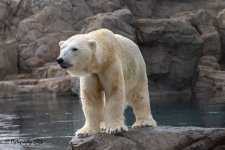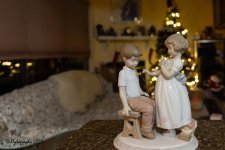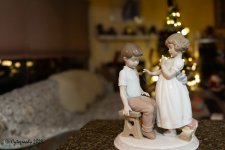Online
With most camera manufacturers, the difference in the cost of a lens that yields 1 extra stop of aperture, means a significantly increased cost. For example, the lens I bought with my Canon R5 is the RF 24-105 f/4.0, which retails currently for #1300.00. Canon has just released a new lens that is a 24-105 f/2.8, which is 1 stop brighter. The cost: $3000.00 (I rounded up $1 in both cases). So you could buy two of the f/4 versions for the price of the new f/2.8 and still have $400 left over!
So what does that new f/2.8 lens get you (besides more cost, larger size and more weight (2.9lbs vs 1.54lbs)? Well, of course you get that extra stop of light that would help in low light situations, and of course you get more bokeh (background blur).
So, why am I not chomping at the bit to purchase this new f/2.8? Well, it's because of a couple of new capabilities in Lightroom: Denoise and Lens Blur tools.
Noise: The fact is, I am already able to shoot at higher ISO with my R5 mirrorless than I could with my old 5D Mark IV DSLR. The R5 handles noise very well in darker situations, and when there is a little more noise than I'd like, Lightroom does an amazing job of handling the noise. In the two sets of shots below, the Polar Bear was shot at ISO 100 so noise wasn't an issue, but the statuette was shot in a lower light situation and the ISO was 6400. Even at 6400 you had to pixel peep to see the noise, but I applied the Lightroom Denoise tool anyway, which really made it look pretty good. So, as far as dealing with low light situations, the need for an extra stop of light on the lens becomes less important.
Lens blur: A new tool in Lightroom is "Lens Blur" which, as the name implies, allow you to increase the amount of bokeh in the background. It uses AI technology to determine what your depth of field is and allows you a lot of latitude in adjusting how much blur there is and also what any "bokeh balls" look like. In the two sets on images below, the first image of each set has an f-stop of f/4 with no additional blur applied in Lightroom. However, the second image in each set has had additional lens blur applied with this new tool. There is a lot of adjustment you can make to refine this blur and what the bokeh balls look like. It's friggin' magic! My one minor complain is, as you add more blur, it doesn't really tell you what equivalent f-stop would be, so you just kind of have to eyeball it to taste. The point is, with these new tools, the need for a $3000 lens to deal with low light and give better background separation is greatly reduced (in my opinion). As an amateur who doesn't earn a living with photography, I'm quite happy to keep my f/4 lenses and apply additional noise reduction and lens blur in LR when/if needed.
Polar Bear shot at 105mm ISO100, f/4.0

Polar Bear shot at 100mm ISO100, f/4.0 with some additional Lens blur applied

Statuette shot at 24mm ISO6400 f/4.0

Statuette shot at 24mm ISO6400 f/4.0 but with a little extra lens blur applied (only about 50% strength).

So what does that new f/2.8 lens get you (besides more cost, larger size and more weight (2.9lbs vs 1.54lbs)? Well, of course you get that extra stop of light that would help in low light situations, and of course you get more bokeh (background blur).
So, why am I not chomping at the bit to purchase this new f/2.8? Well, it's because of a couple of new capabilities in Lightroom: Denoise and Lens Blur tools.
Noise: The fact is, I am already able to shoot at higher ISO with my R5 mirrorless than I could with my old 5D Mark IV DSLR. The R5 handles noise very well in darker situations, and when there is a little more noise than I'd like, Lightroom does an amazing job of handling the noise. In the two sets of shots below, the Polar Bear was shot at ISO 100 so noise wasn't an issue, but the statuette was shot in a lower light situation and the ISO was 6400. Even at 6400 you had to pixel peep to see the noise, but I applied the Lightroom Denoise tool anyway, which really made it look pretty good. So, as far as dealing with low light situations, the need for an extra stop of light on the lens becomes less important.
Lens blur: A new tool in Lightroom is "Lens Blur" which, as the name implies, allow you to increase the amount of bokeh in the background. It uses AI technology to determine what your depth of field is and allows you a lot of latitude in adjusting how much blur there is and also what any "bokeh balls" look like. In the two sets on images below, the first image of each set has an f-stop of f/4 with no additional blur applied in Lightroom. However, the second image in each set has had additional lens blur applied with this new tool. There is a lot of adjustment you can make to refine this blur and what the bokeh balls look like. It's friggin' magic! My one minor complain is, as you add more blur, it doesn't really tell you what equivalent f-stop would be, so you just kind of have to eyeball it to taste. The point is, with these new tools, the need for a $3000 lens to deal with low light and give better background separation is greatly reduced (in my opinion). As an amateur who doesn't earn a living with photography, I'm quite happy to keep my f/4 lenses and apply additional noise reduction and lens blur in LR when/if needed.
Polar Bear shot at 105mm ISO100, f/4.0

Polar Bear shot at 100mm ISO100, f/4.0 with some additional Lens blur applied

Statuette shot at 24mm ISO6400 f/4.0

Statuette shot at 24mm ISO6400 f/4.0 but with a little extra lens blur applied (only about 50% strength).

Last edited:

 Hi Guest!
Hi Guest!

 smilie in place of the real @
smilie in place of the real @
 Pretty Please - add it to our Events forum(s) and add to the calendar! >>
Pretty Please - add it to our Events forum(s) and add to the calendar! >> 


